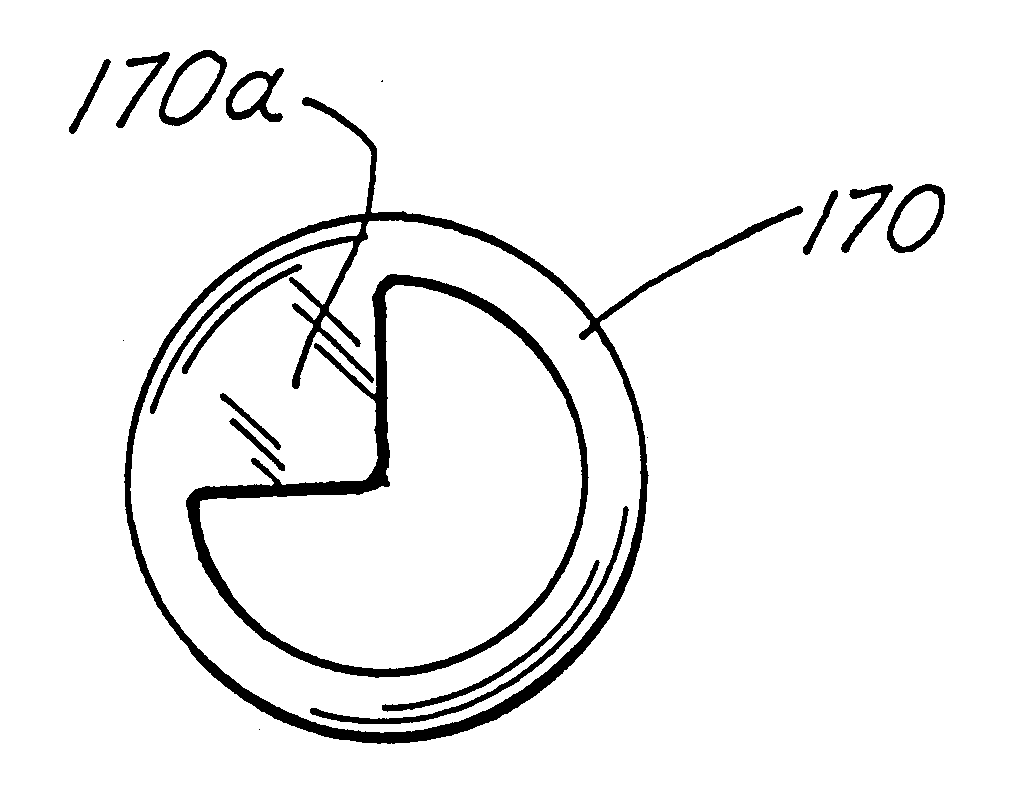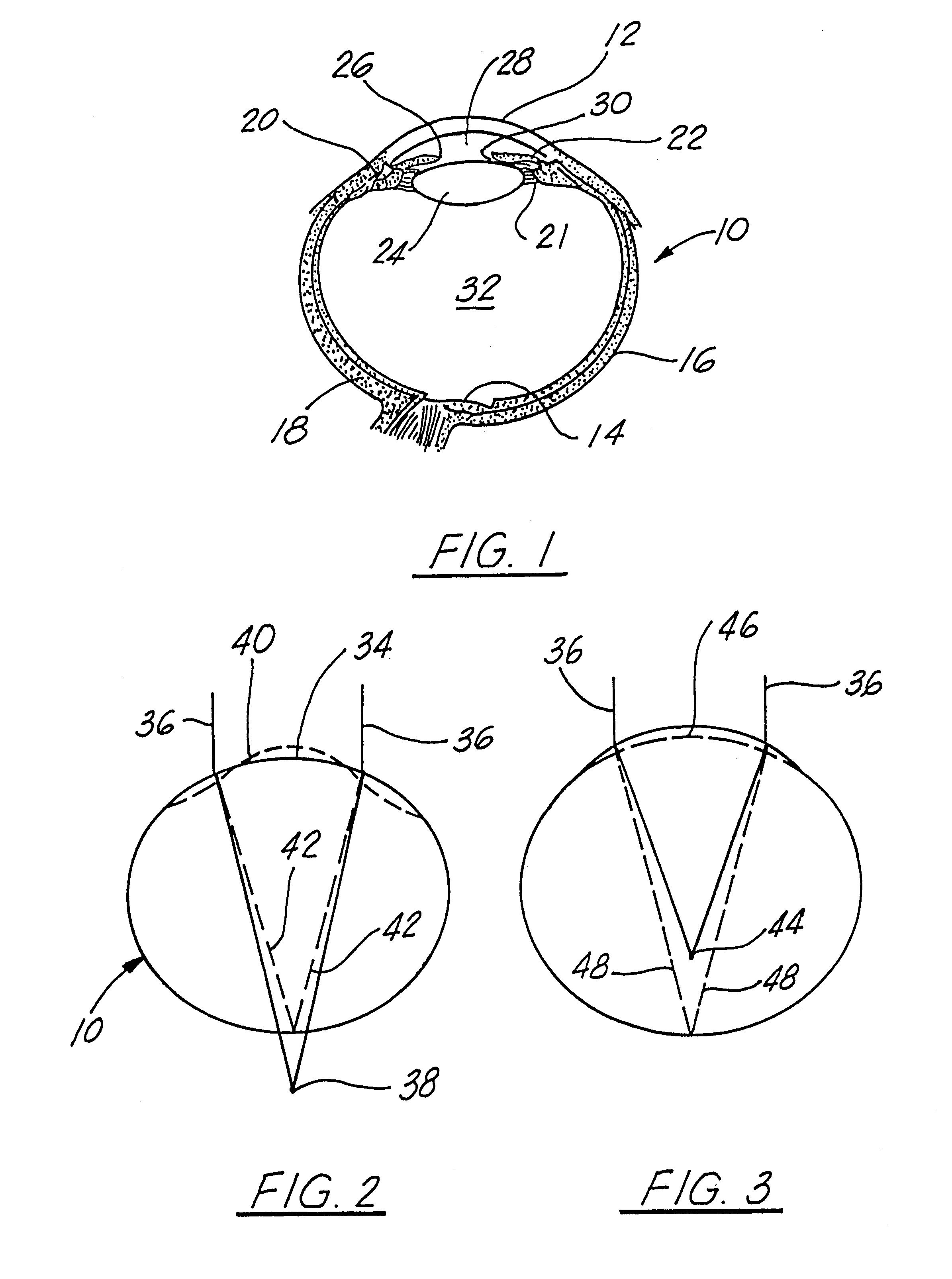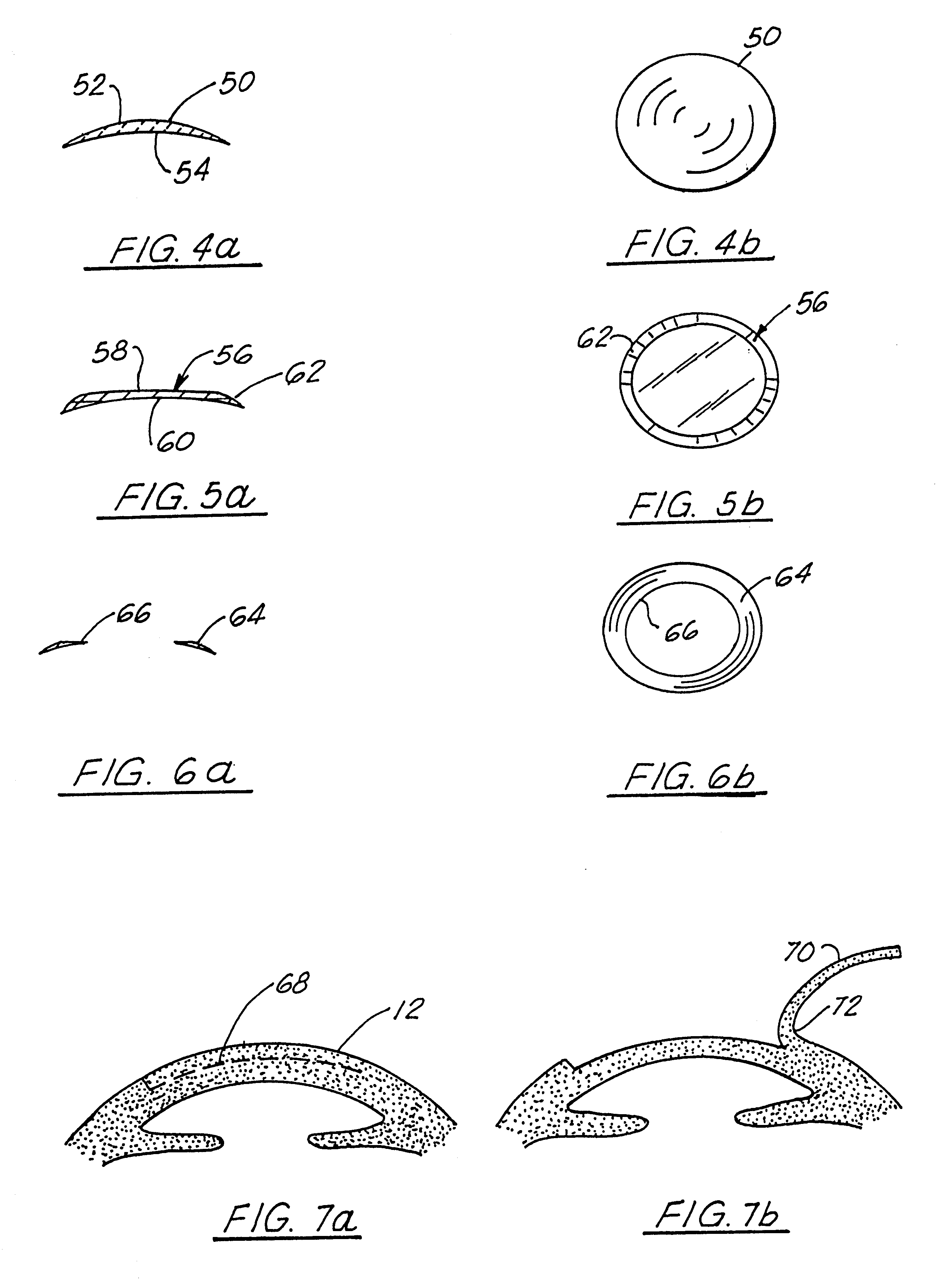Corneal implant and method of manufacture
a technology of corneal implants and corneal arteries, which is applied in the field of corneal implants to achieve the effects of relieving pressure, reducing tension of bowman's membrane, and correcting the refractive error of the ey
- Summary
- Abstract
- Description
- Claims
- Application Information
AI Technical Summary
Benefits of technology
Problems solved by technology
Method used
Image
Examples
Embodiment Construction
Referring first to FIG. 1 of the drawings, a schematic representation of the globe of the eye 10 is shown, which resembles a sphere with an anterior bulged spherical portion 12 that represents the cornea. The eye 10 is made up of three concentric coverings that enclose the various transparent media through which light must pass before reaching the light sensitive retina 14.
The outer-most covering is a fibrous protective portion that includes a posterior layer which is white and opaque, called the sclera 16, which is sometimes referred to as the white of the eye where it is visible from the front. The anterior 1 / 6th of this outer layer is the transparent cornea 12.
A middle covering is mainly vascular and nutritive in function and is made up of the choroid 18, the ciliary 20 and the iris 22. The choroid generally functions to maintain the retina. The ciliary muscle 21 is involved in suspending the lens 24 and accommodating the lens. The iris 22 is the most anterior portion of the midd...
PUM
 Login to View More
Login to View More Abstract
Description
Claims
Application Information
 Login to View More
Login to View More - R&D
- Intellectual Property
- Life Sciences
- Materials
- Tech Scout
- Unparalleled Data Quality
- Higher Quality Content
- 60% Fewer Hallucinations
Browse by: Latest US Patents, China's latest patents, Technical Efficacy Thesaurus, Application Domain, Technology Topic, Popular Technical Reports.
© 2025 PatSnap. All rights reserved.Legal|Privacy policy|Modern Slavery Act Transparency Statement|Sitemap|About US| Contact US: help@patsnap.com



